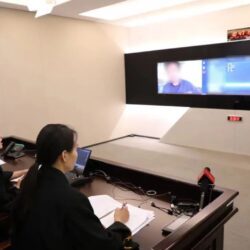In recent years, the artificial intelligence sector has experienced remarkable growth, highlighted by the transformative impact of ChatGPT in 2022 and the significant technological advancements achieved by China’s AI company DeepSeek in 2025. These ongoing technological developments are reshaping our understanding of intelligence and driving rapid innovation within China’s AI landscape.
To address the governance challenges posed by the swift evolution of AI technology, China National Internet Information Office, along with several authorities, introduced the “Measures for the Identification of AI-Generated Synthetic Content” on March 14, 2025. These measures will come into effect on September 1, 2025, marking the first domestic regulations aimed at standardizing the management of AI-generated synthetic content. They establish an innovative dual identification system of “explicit + implicit” labels and enhance oversight through a metadata traceability mechanism, which is expected to significantly influence the healthy and standardized growth of the domestic AI industry.
What exactly is “artificial intelligence-generated synthetic content”?
According to the Identification Measures, it refers to information such as text, images, audio, video, and virtual scenes that are created and synthesized using AI technology. The widespread adoption of AI applications for generating various forms of content has made AI-generated material prevalent online. However, the high realism of these creations has also led to challenges, including the spread of fake news, deepfake scams, and copyright violations, which can disrupt social order.
What are the key highlights of the new regulations in the Identification Measures?
1. Introduction of a “Dual Labeling” Classification Supervision System
For the first time, the “Identification Measures” categorize AI-generated content labeling into “explicit labels” and “implicit labels.” Explicit labels are clearly visible to users, such as through text or graphics, while implicit labels are embedded in the data files and are not easily perceived. Service providers must add these labels according to the type of content generated, ensuring compliance with higher-level laws.
2. “Generation-Transmission” Comprehensive Regulatory Oversight
The “Identification Measures” extend regulatory oversight to both the generation and transmission phases of AI-generated content. Service providers must verify whether documents contain explicit identifiers or traces of generation and take appropriate measures to alert the public if content may be synthetic. This comprehensive approach aims to create a robust governance framework for the entire process.
What steps can companies in the AI industry take to ensure compliance?
1. For AIGC Companies
These companies should align their practices with the explicit and implicit identification rules. By leveraging technology governance, they can develop systems to automatically add necessary identifiers to generated content. Additionally, they should enhance their metadata management to include essential information while ensuring the integrity of identifiers. A comprehensive identification management system should be established, including updated user agreements that clarify compliance obligations and retention of logs for at least six months.
2. For Operators of Information Dissemination Platforms
Companies should take an active role in monitoring content flow and establish verification mechanisms for AI-generated synthetic content. This includes providing training for manual reviews and developing automated detection tools. They should also ensure that metadata includes relevant information about the synthetic content and collaborate with AIGC companies to align technical and regulatory standards. Furthermore, they can implement systems to detect and penalize malicious activities related to AI-generated content, encouraging users to declare the nature of their content and report any non-compliance.
By adopting these measures, companies can navigate the evolving landscape of AI regulations while contributing to a responsible and innovative AI ecosystem.
